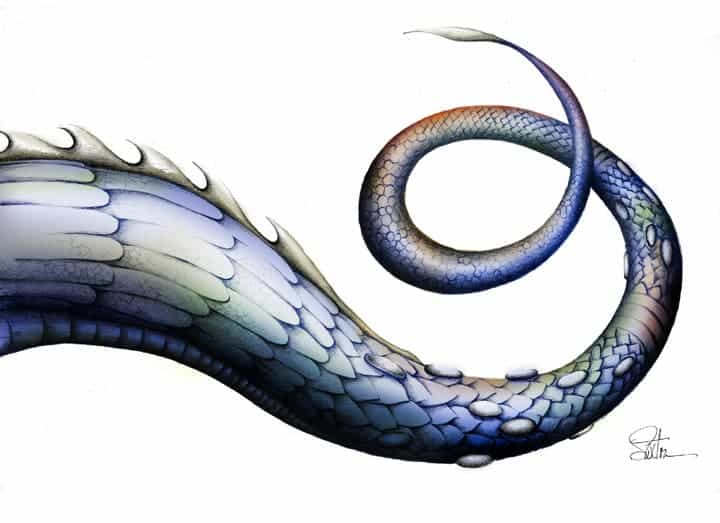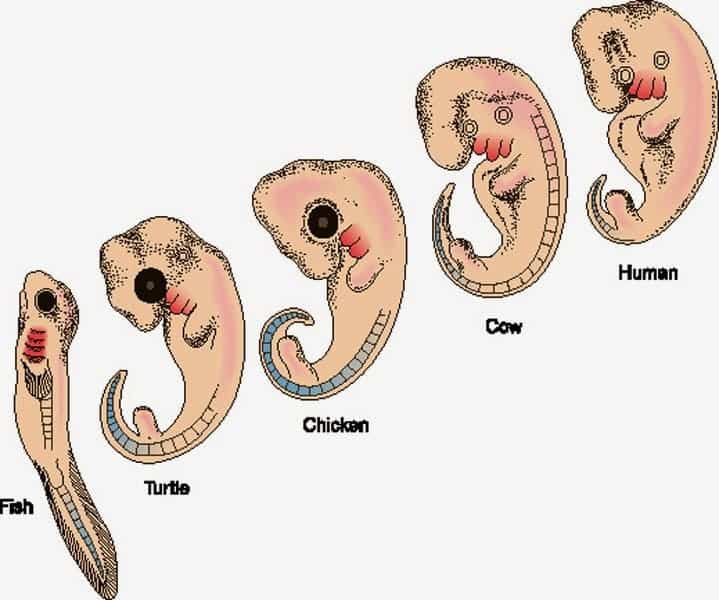
We might not wag our tails anymore but humans still bear vestigial traces of one. Inside the uterus, human embryos start off with a tail that gradually disappears and once we come into this world, there’s a tailbone to remind us that we haven’t gone that far. Strikingly, our early ancestors lost their tails not once, but twice, say scientists who analyzed 350-million-year-old fossils.
To get to the bottom of things, researchers at the University of Pennsylvania analyzed the fossilized hatchlings of the Aetheretmon, a jawed fish and ancestor to terrestrial animals. The Aetheretmon used to have both a fleshy tail and a flexible tail fin, one sitting atop the other, the analysis showed.

Since Darwin, biologists thought fish simply grew their flexible tail atop an ancestral tail that’s shared with all land animals. But the new study overturns this thinking because the two tails are grown together. What really happened, the study‘s authors say, is fish lost their fleshy tail and kept only the tail fin, which is flexible and more adapted to aquatic environments. Then, those fish which gradually became semi-aquatic and then land dwelling lost their flexible fin tail and kept the fleshy tail. So we’re looking at two different modes altogether.
“Fleshy tails go all the way back to the earliest vertebrate ancestors and are found in very young embryos, so it would be very difficult to get rid of them entirely without causing other problems,” author Lauren Sallan told Seeker. “As a result, both fishes and humans have had to stunt growth instead, leaving a buried, vestigial tail much like the legs of whales.”
Losing the tail fin was strike one. Strike two happened once human ancestors lost what remained of their bony tail to accommodate upright movement. In both fish and humans, however, we can still see the remnants of the bony tail buried in our lower backs — the coccyx or tailbone.
“The tetrapod tail likely started as a limb-like outgrowth in the first vertebrates, while the fish caudal fin started as a co-opted median fin, like the dorsal fin,” Sallan said in a statement. “All vertebrate tail diversity might be explained by the relative growth and loss of these two tails, with the remaining fleshy tail stunted in humans as in fishes.”
It seems likely that the two outgrowths are governed by two different groups of genes. This would imply that natural selection affected them independently.
“It tells us why we have all this diversity in fins and limbs in past and present,” Sallan said. “There might have been some lineages that favored one form over another for functional or ecological reasons. If a fish couldn’t adapt this trait, which is so vital for swimming, they might have gone extinct.”
This study is not the last word on the matter, though. The findings have to be confirmed by a developmental biologist by verifying the molecular pathways that generate limb outgrowth.
“This would be an easy way of testing evolution in the lab,” she said.


